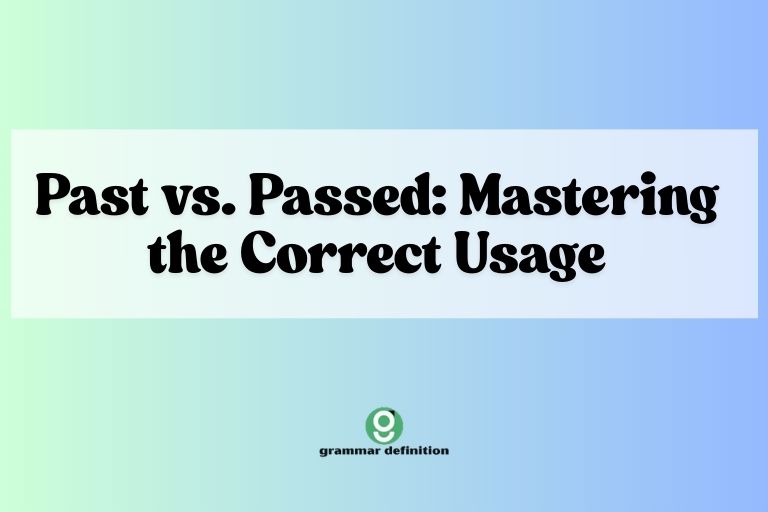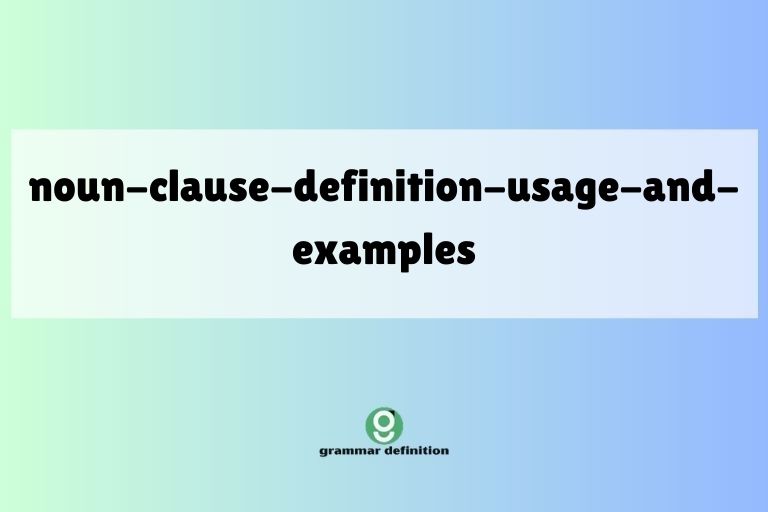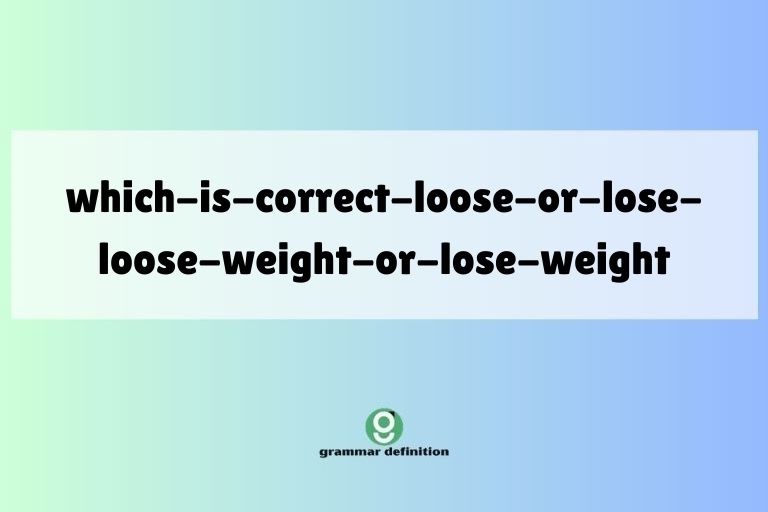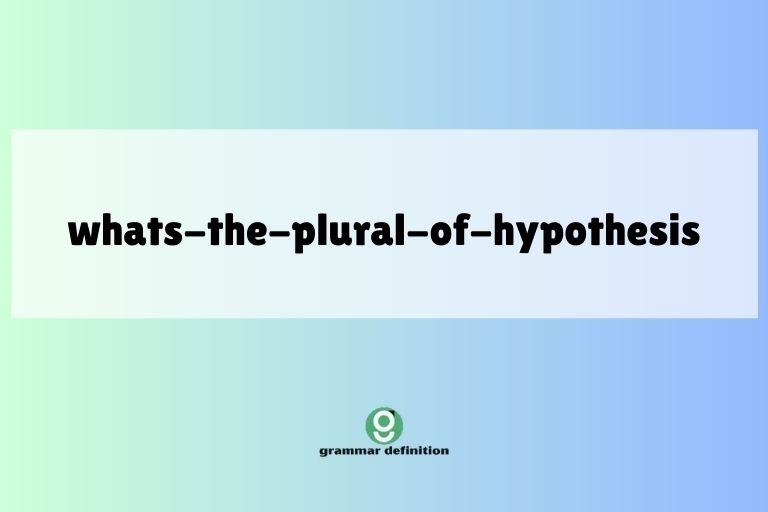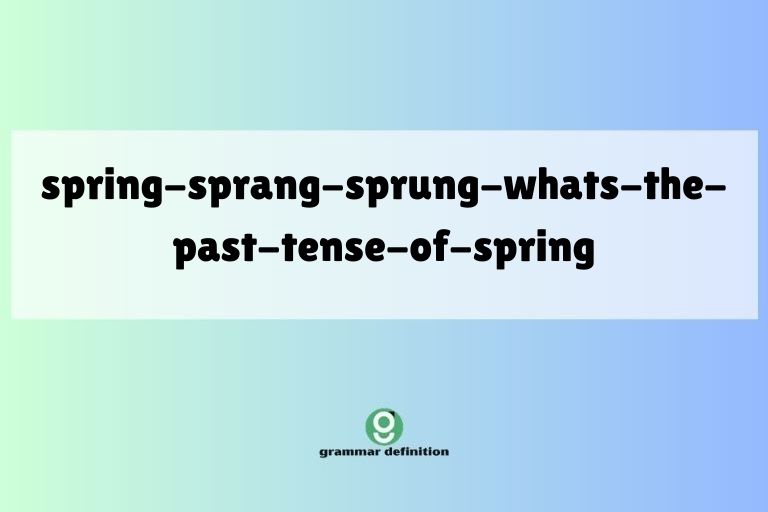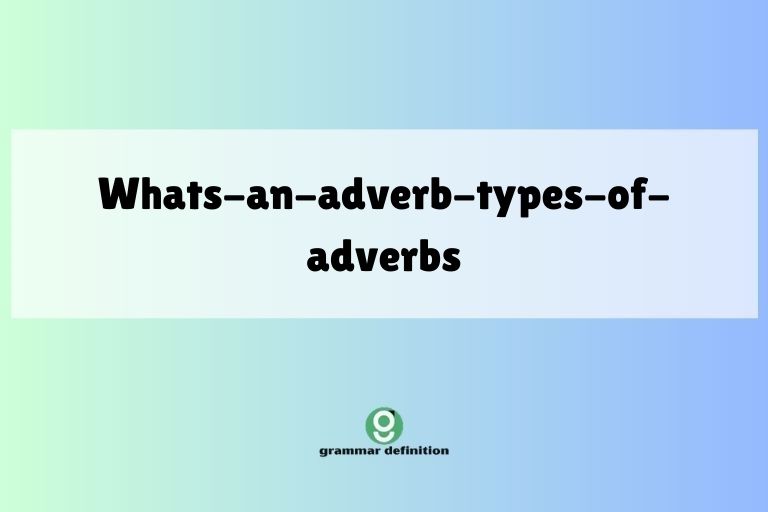Comma Before “And”: Mastering Correct Usage
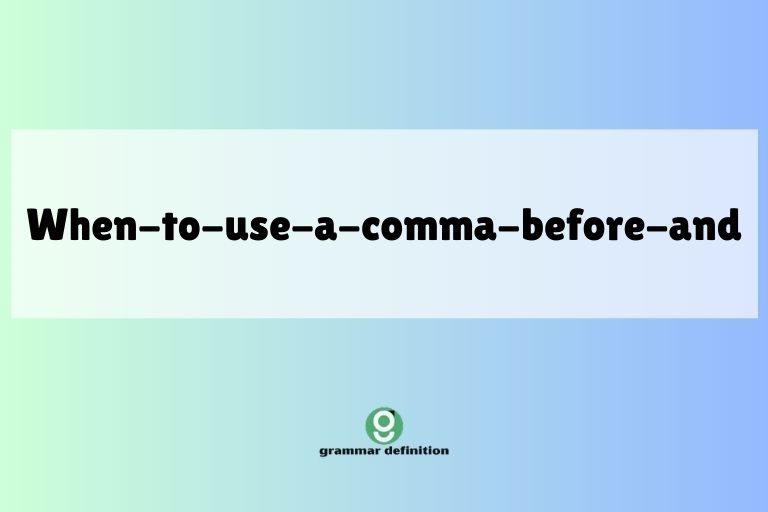
Understanding when to use a comma before “and” is crucial for clear and effective writing. This seemingly small punctuation mark can significantly impact the meaning and readability of your sentences.
Whether you’re a student, a professional writer, or simply someone who wants to improve their grammar, this comprehensive guide will provide you with the knowledge and practice you need to master the comma before “and.” We will explore the rules, exceptions, and common mistakes associated with its usage, equipping you with the tools to write with confidence and precision. This article caters to learners of all levels, from beginners to advanced.
Table of Contents
- Definition and Function
- Structural Breakdown
- Types of “And” Clauses
- Examples
- Usage Rules
- Common Mistakes
- Practice Exercises
- Advanced Topics
- FAQ
- Conclusion
Definition and Function
A comma is a punctuation mark (,) used to separate elements within a sentence. The placement of a comma before the conjunction “and” is governed by specific grammatical rules, primarily related to the type of items being joined and the overall structure of the sentence.
Understanding these rules ensures clarity and prevents misinterpretations.
The primary function of a comma before “and” is to indicate a pause or separation between two independent clauses. An independent clause is a group of words that can stand alone as a complete sentence. When “and” connects two such clauses, a comma is typically required. However, when “and” connects items in a list or parts of a compound predicate, the rules differ, and a comma may or may not be necessary.
The presence or absence of a comma can change the meaning of a sentence. For example, consider the following sentences:
- “I went to the store and bought milk, bread, and eggs.” (List of items, comma before “and” is optional in this case, often preferred for clarity)
- “I went to the store, and I bought milk.” (Two independent clauses joined by “and,” comma required)
Structural Breakdown
Understanding the structural elements of a sentence is essential for determining whether a comma is needed before “and.” Let’s break down the key components:
- Independent Clause: A group of words containing a subject and a verb that expresses a complete thought. It can stand alone as a sentence. Example: “The dog barked.”
- Dependent Clause: A group of words containing a subject and a verb that does not express a complete thought and cannot stand alone as a sentence. It often begins with a subordinating conjunction (e.g., “because,” “although,” “if”). Example: “Because it was raining.”
- Coordinating Conjunction: A word that connects words, phrases, or clauses of equal grammatical rank. The most common coordinating conjunctions are FANBOYS: For, And, Nor, But, Or, Yet, So.
- Compound Subject: Two or more subjects joined by a coordinating conjunction. Example: “John and Mary went to the store.”
- Compound Predicate: Two or more predicates (verbs and their objects) joined by a coordinating conjunction. Example: “The dog barked and wagged its tail.”
- List: A series of three or more items. Example: “Apples, bananas, and oranges.”
The key to deciding whether to use a comma before “and” lies in identifying these structural elements and understanding how they are connected.
Types of “And” Clauses
The type of clauses connected by “and” significantly influences comma usage. Here are the main types:
Independent Clauses
When “and” joins two independent clauses, a comma is generally required before “and.” This rule helps to separate the two complete thoughts and improve readability.
Example: “The sun was shining, and the birds were singing.”
Compound Predicates
When “and” joins two parts of a compound predicate (two verbs sharing the same subject), a comma is typically not needed. The two verbs are closely related and form a single, unified action.
Example: “The dog barked and wagged its tail.”
Items in a List
When “and” is used to connect the last two items in a list of three or more items, the use of a comma before “and” (the Oxford comma or serial comma) is a matter of style. Some style guides (e.g., AP Style) omit it, while others (e.g., Chicago Manual of Style) recommend it.
Using the Oxford comma consistently can prevent ambiguity.
Example: “I bought apples, bananas, and oranges.” (Oxford comma) or “I bought apples, bananas and oranges.” (No Oxford comma)
Other Considerations
In some cases, short and closely related independent clauses may not require a comma before “and.” However, using a comma is generally considered safer and clearer, especially in longer or more complex sentences.
Examples
Let’s examine various examples to illustrate the correct usage of commas before “and” in different contexts. The following tables provide clear instances of when to use and not use the comma.
Independent Clauses Examples
The following table shows examples of two independent clauses joined by “and,” where a comma is necessary.
| Sentence | Explanation |
|---|---|
| The cat sat on the mat, and the dog slept on the rug. | Two independent clauses: “The cat sat on the mat” and “the dog slept on the rug.” |
| She studied hard for the exam, and she passed with flying colors. | Two independent clauses: “She studied hard for the exam” and “she passed with flying colors.” |
| The rain was pouring down, and the streets were flooded. | Two independent clauses: “The rain was pouring down” and “the streets were flooded.” |
| He finished his work, and he went home. | Two independent clauses: “He finished his work” and “he went home.” |
| The movie was long, and it was boring. | Two independent clauses: “The movie was long” and “it was boring.” |
| The food was delicious, and the service was excellent. | Two independent clauses: “The food was delicious” and “the service was excellent.” |
| I wanted to go to the party, and I couldn’t find a ride. | Two independent clauses: “I wanted to go to the party” and “I couldn’t find a ride.” |
| She loves to read books, and she enjoys writing stories. | Two independent clauses: “She loves to read books” and “she enjoys writing stories.” |
| The car broke down, and we had to walk home. | Two independent clauses: “The car broke down” and “we had to walk home.” |
| The sun set, and the stars appeared. | Two independent clauses: “The sun set” and “the stars appeared.” |
| He opened the door, and she walked in. | Two independent clauses: “He opened the door” and “she walked in.” |
| The music was loud, and people were dancing. | Two independent clauses: “The music was loud” and “people were dancing.” |
| I felt tired, and I went to bed early. | Two independent clauses: “I felt tired” and “I went to bed early.” |
| She practiced the piano, and she played beautifully. | Two independent clauses: “She practiced the piano” and “she played beautifully.” |
| The cake looked delicious, and it tasted even better. | Two independent clauses: “The cake looked delicious” and “it tasted even better.” |
| The project was challenging, and it was rewarding. | Two independent clauses: “The project was challenging” and “it was rewarding.” |
| They traveled to Europe, and they visited many countries. | Two independent clauses: “They traveled to Europe” and “they visited many countries.” |
| He studied history, and he became a professor. | Two independent clauses: “He studied history” and “he became a professor.” |
| She ran the marathon, and she finished in record time. | Two independent clauses: “She ran the marathon” and “she finished in record time.” |
| The concert was amazing, and everyone enjoyed it. | Two independent clauses: “The concert was amazing” and “everyone enjoyed it.” |
| I love coffee, and I drink it every morning. | Two independent clauses: “I love coffee” and “I drink it every morning.” |
| She writes poetry, and she publishes her work online. | Two independent clauses: “She writes poetry” and “she publishes her work online.” |
| The weather is beautiful, and we should go for a walk. | Two independent clauses: “The weather is beautiful” and “we should go for a walk.” |
| He plays the guitar, and he sings in a band. | Two independent clauses: “He plays the guitar” and “he sings in a band.” |
| She paints landscapes, and she sells her paintings at local art fairs. | Two independent clauses: “She paints landscapes” and “she sells her paintings at local art fairs.” |
Compound Predicates Examples
The following table shows examples of compound predicates joined by “and,” where a comma is usually omitted.
| Sentence | Explanation |
|---|---|
| The dog barked and wagged its tail. | Compound predicate: “barked and wagged.” |
| She studied hard and passed the exam. | Compound predicate: “studied hard and passed.” |
| The rain poured down and flooded the streets. | Compound predicate: “poured down and flooded.” |
| He finished his work and went home. | Compound predicate: “finished his work and went home.” |
| The movie was long and boring. | Compound predicate: “was long and boring.” |
| The food was delicious and satisfying. | Compound predicate: “was delicious and satisfying.” |
| I wanted to go to the party and find a ride. | Compound predicate: “wanted to go to the party and find a ride.” |
| She loves to read books and write stories. | Compound predicate: “loves to read books and write stories.” |
| The car broke down and left us stranded. | Compound predicate: “broke down and left us stranded.” |
| The sun set and painted the sky with vibrant colors. | Compound predicate: “set and painted.” |
| He opened the door and greeted his guests. | Compound predicate: “opened the door and greeted.” |
| The music was loud and encouraged everyone to dance. | Compound predicate: “was loud and encouraged.” |
| I felt tired and decided to go to bed early. | Compound predicate: “felt tired and decided.” |
| She practiced the piano and played a beautiful melody. | Compound predicate: “practiced the piano and played.” |
| The cake looked delicious and smelled heavenly. | Compound predicate: “looked delicious and smelled.” |
| The project was challenging and ultimately rewarding. | Compound predicate: “was challenging and ultimately rewarding.” |
| They traveled to Europe and visited many famous landmarks. | Compound predicate: “traveled to Europe and visited.” |
| He studied history and became a renowned professor. | Compound predicate: “studied history and became.” |
| She ran the marathon and achieved a personal best time. | Compound predicate: “ran the marathon and achieved.” |
| The concert was amazing and left the audience spellbound. | Compound predicate: “was amazing and left.” |
| I love coffee and drink it every morning to wake up. | Compound predicate: “love coffee and drink.” |
| She writes poetry and publishes her work online for others to enjoy. | Compound predicate: “writes poetry and publishes.” |
| The weather is beautiful and invites us to go for a walk. | Compound predicate: “is beautiful and invites.” |
| He plays the guitar and sings in a band on weekends. | Compound predicate: “plays the guitar and sings.” |
| She paints landscapes and sells her paintings at local art fairs to make a living. | Compound predicate: “paints landscapes and sells.” |
List Examples (Oxford Comma)
The following table shows examples of lists where the use of the Oxford comma is optional but often preferred for clarity.
| Sentence (with Oxford Comma) | Sentence (without Oxford Comma) |
|---|---|
| I bought apples, bananas, and oranges. | I bought apples, bananas and oranges. |
| She invited John, Mary, and Peter. | She invited John, Mary and Peter. |
| We need paper, pencils, and erasers. | We need paper, pencils and erasers. |
| The colors are red, white, and blue. | The colors are red, white and blue. |
| He enjoys hiking, swimming, and camping. | He enjoys hiking, swimming and camping. |
| She likes coffee, tea, and juice. | She likes coffee, tea and juice. |
| The menu includes soup, salad, and bread. | The menu includes soup, salad and bread. |
| I need to buy milk, eggs, and cheese. | I need to buy milk, eggs and cheese. |
| She packed her clothes, books, and laptop. | She packed her clothes, books and laptop. |
| He collected stamps, coins, and postcards. | He collected stamps, coins and postcards. |
| We visited Paris, Rome, and London. | We visited Paris, Rome and London. |
| She studied math, science, and history. | She studied math, science and history. |
| He plays the guitar, piano, and drums. | He plays the guitar, piano and drums. |
| She speaks English, Spanish, and French. | She speaks English, Spanish and French. |
| The garden has roses, tulips, and lilies. | The garden has roses, tulips and lilies. |
| He ordered pizza, pasta, and salad. | He ordered pizza, pasta and salad. |
| She wore a hat, scarf, and gloves. | She wore a hat, scarf and gloves. |
| He read books, articles, and blogs. | He read books, articles and blogs. |
| She watched movies, documentaries, and series. | She watched movies, documentaries and series. |
| He listened to music, podcasts, and audiobooks. | He listened to music, podcasts and audiobooks. |
| The store sells shoes, bags, and accessories. | The store sells shoes, bags and accessories. |
| The museum displays paintings, sculptures, and artifacts. | The museum displays paintings, sculptures and artifacts. |
| The library offers books, magazines, and newspapers. | The library offers books, magazines and newspapers. |
| The park has trees, flowers, and benches. | The park has trees, flowers and benches. |
| The conference included workshops, presentations, and networking events. | The conference included workshops, presentations and networking events. |
Usage Rules
Here’s a summary of the rules governing the use of commas before “and”:
- Independent Clauses: Use a comma before “and” when it connects two independent clauses.
- Compound Predicates: Generally, do not use a comma before “and” when it connects parts of a compound predicate.
- Lists: The Oxford comma (comma before “and” in a list) is optional, but consistent use is recommended for clarity.
- Short, Closely Related Clauses: In some cases, a comma may be omitted before “and” when connecting very short and closely related independent clauses, but it is generally safer to include it.
Exceptions and Special Cases:
- Clarity: If omitting the comma before “and” would create ambiguity, use the comma regardless of the general rules.
- Style Guides: Adhere to the specific style guide required for your writing (e.g., AP, Chicago, MLA).
Common Mistakes
Here are some common mistakes to avoid when using commas before “and”:
| Incorrect | Correct | Explanation |
|---|---|---|
| I went to the store, and bought milk. | I went to the store and bought milk. | No comma needed because it’s a compound predicate. |
| The cat sat, and slept. | The cat sat and slept. | No comma needed because it’s a compound predicate. |
| She studied hard and, passed the test. | She studied hard and passed the test. | Incorrect comma placement. |
| I like apples, bananas and, pears. | I like apples, bananas, and pears. | Incorrect comma placement. |
| He ran fast, and won the race. | He ran fast and won the race. | No comma needed because it’s a compound predicate. |
| The sky is blue and, the birds are singing. | The sky is blue, and the birds are singing. | Comma needed to separate independent clauses. |
| She sings beautifully, and plays the piano. | She sings beautifully and plays the piano. | No comma needed because it’s a compound predicate. |
| I need to buy bread, milk, and, eggs. | I need to buy bread, milk, and eggs. | Incorrect comma placement. |
| He is tall, and handsome. | He is tall and handsome. | No comma needed because it’s a compound predicate. |
| She is smart, and kind. | She is smart and kind. | No comma needed because it’s a compound predicate. |
Practice Exercises
Test your understanding with these practice exercises. Determine whether a comma is needed before “and” in each sentence.
Exercise 1: Comma Placement
| Sentence | Comma Needed? (Yes/No) | Answer |
|---|---|---|
| 1. The sun was hot and the ice cream melted quickly. | Yes | |
| 2. She laughed and cried at the end of the movie. | No | |
| 3. I need to buy milk eggs and bread. | Yes (Oxford Comma Recommended) | |
| 4. He studied all night and he still failed the exam. | Yes | |
| 5. The dog jumped and caught the ball. | No | |
| 6. She is a talented artist and a skilled musician. | No | |
| 7. The car is old but it still runs well. | Yes | |
| 8. We went to the park and had a picnic. | No | |
| 9. The book was interesting but it was too long. | Yes | |
| 10. I like coffee tea and hot chocolate. | Yes (Oxford Comma Recommended) |
Exercise 2: Correct the Sentences
Correct the following sentences by adding or removing commas as needed.
| Sentence | Corrected Sentence |
|---|---|
| 1. The cat purred, and slept soundly. | The cat purred and slept soundly. |
| 2. He ate pizza and, drank soda. | He ate pizza and drank soda. |
| 3. She sang beautifully and, played the guitar. | She sang beautifully and played the guitar. |
| 4. I went to the store and I bought some fruit. | I went to the store, and I bought some fruit. |
| 5. The movie was long and, boring. | The movie was long and boring. |
| 6. She is intelligent, and kind. | She is intelligent and kind. |
| 7. I need pens, pencils, and paper. | I need pens, pencils, and paper. |
| 8. He finished his work and went home, quickly. | He finished his work and went home quickly. |
| 9. The rain stopped, and the sun came out. | The rain stopped, and the sun came out. |
| 10. She loves to read, and write. | She loves to read and write. |
Advanced Topics
For advanced learners, let’s explore some more complex aspects of comma usage with “and.”
Commas with Compound Sentences and Conjunctive Adverbs
When a conjunctive adverb (e.g., however, therefore, nevertheless) is used to connect two independent clauses, a semicolon is often used before the conjunctive adverb, and a comma follows it. However, “and” is a coordinating conjunction, not a conjunctive adverb, so the semicolon is not needed.
Example: “The weather was bad; however, we still went for a walk.” (Semicolon with conjunctive adverb)
Example: “The weather was bad, and we decided to stay inside.” (Comma with coordinating conjunction “and”)
Commas for Clarity in Complex Sentences
In complex sentences with multiple clauses, commas can be used to improve clarity, even if they are not strictly required by the rules. This is especially true when dealing with parenthetical elements or introductory phrases.
Example: “After a long and tiring day, I went home, and I immediately fell asleep.” (The first comma after “day” is for the introductory phrase, the second before “and” joins two independent clauses)
Varying Sentence Structure
Mastering comma usage allows for more varied and sophisticated sentence structures. By understanding the rules and exceptions, writers can create sentences that are both grammatically correct and stylistically effective.
FAQ
Here are some frequently asked questions about using commas before “and”:
- When is a comma definitely required before “and”?
A comma is generally required before “and” when it connects two independent clauses. This helps to separate the two complete thoughts and improve readability. For example, “The sun was shining, and the birds were singing.”
- When is a comma definitely not required before “and”?
A comma is generally not required before “and” when it connects parts of a compound predicate (two verbs sharing the same subject). For example, “The dog barked and wagged its tail.” The two verbs are closely related and form a single, unified action.
- What is the Oxford comma, and when should I use it?
The Oxford comma (also known as the serial comma) is the comma that comes before “and” in a list of three or more items. Its use is a matter of style. Some style guides (e.g., Chicago Manual of Style) recommend using it for clarity, while others (e.g., AP Style) omit it. Consistency is key. For example, “I bought apples, bananas, and oranges.” (Oxford comma) or “I bought apples, bananas and oranges.” (No Oxford comma)
- Does sentence length affect whether I need a comma before “and”?
While not a strict rule, sentence length can influence the decision. Shorter, closely related independent clauses might not require a comma. However, in longer or more complex sentences, using a comma before “and” can improve clarity, even if it’s not strictly grammatically necessary.
- What if omitting the comma creates ambiguity?
Clarity should always take precedence. If omitting the comma before “and” would create ambiguity or confusion, use the comma regardless of the general rules. This ensures that the reader understands the intended meaning of the sentence.
- Do different style guides have different rules about commas before “and”?
Yes, different style guides (e.g., AP, Chicago, MLA) may have slightly different recommendations regarding comma usage, particularly concerning the Oxford comma. It’s essential to adhere to the specific style guide required for your writing.
- How can I improve my understanding of comma usage in general?
Practice is key! Read widely and pay attention to how commas are used in well-written texts. Review grammar rules and guidelines, and consider working with a writing tutor or editor to get personalized feedback on your writing.
- Are there any online tools that can help me check my comma usage?
Yes, many online grammar checkers and writing tools can help identify potential comma errors. However, it’s important to remember that these tools are not always perfect and should be used as a supplement to your own understanding of grammar rules.
Conclusion
Mastering the use of commas before “and” is a fundamental skill for effective communication. By understanding the rules, exceptions, and common mistakes, you can write with greater clarity and precision.
Remember to consider the type of clauses being connected, the length and complexity of the sentence, and the potential for ambiguity. Consistent practice and attention to detail will help you develop a strong command of comma usage, enhancing the overall quality of your writing.
As a final tip, always prioritize clarity. If you’re unsure whether to use a comma, ask yourself if it will make the sentence easier to understand.
When in doubt, it’s often better to include the comma, as it can help prevent misinterpretations. Keep practicing, and you’ll soon find that using commas correctly becomes second nature.
Happy writing!

